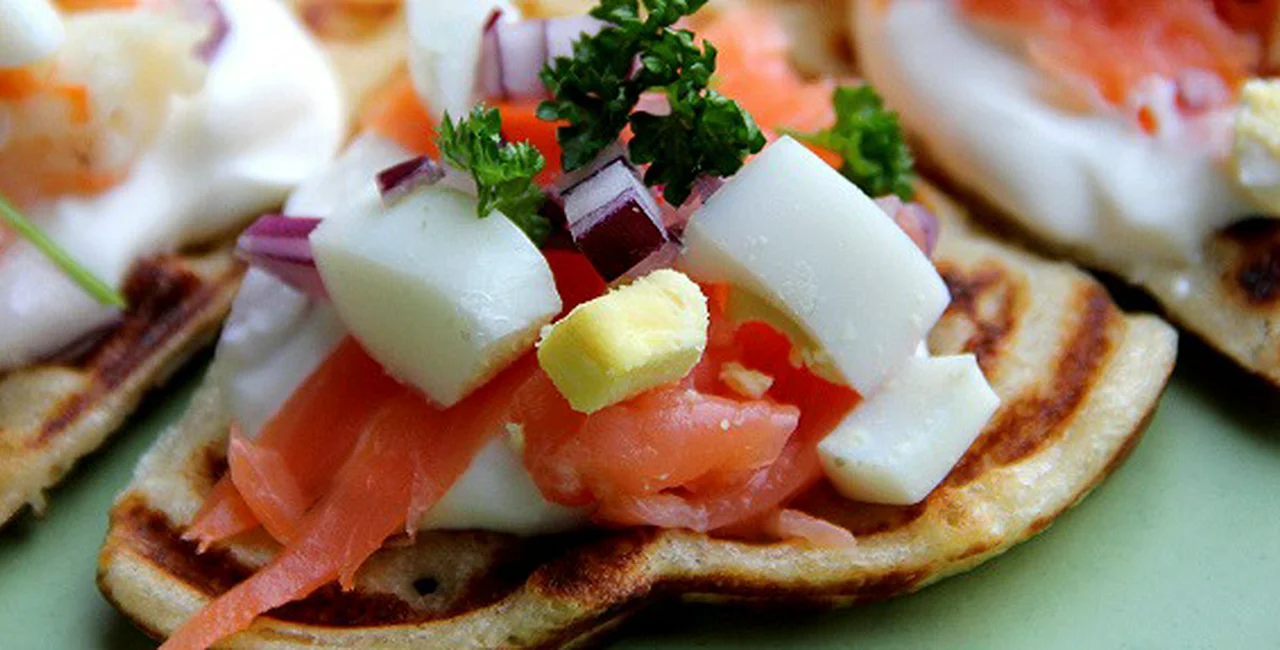As I bite into a savory waffle piled with smoked salmon, red onion, chopped egg, parsley, and crème fraiche, I am certain that Swedish illustrator and designer Cecilia Book Nikolovski’s culinary creations are just as colorful as her Jinonice apartment. Today and every day, Cecilia cooks surrounded by a vivid tableau of her own drawings, Scandinavian design objects, and her 14-month-old daughter Mila’s toys.
The Stockholm-native moved to Prague two years ago with her husband, Loren, who hails from Macedonia. Both partners are so passionate about food that they often argue over whose turn it is to make dinner. “Loren does moussaka and I do meatballs,” she says, naming their family’s favorite meals. “We also grow loads of tomatoes on our balcony and before every meal serve what we call Nikolovski’s salad, a mix of tomatoes, cucumbers, black olives, and Balkan cheese.”
Living in the Czech Republic has definitely influenced Cecilia’s cooking style—she admits to making a lot more pork. “The food here isn’t much different than classic Swedish cuisine,” she says. “We also eat lots of meat and potatoes in Sweden, though not all that fried stuff like the Czechs do.”
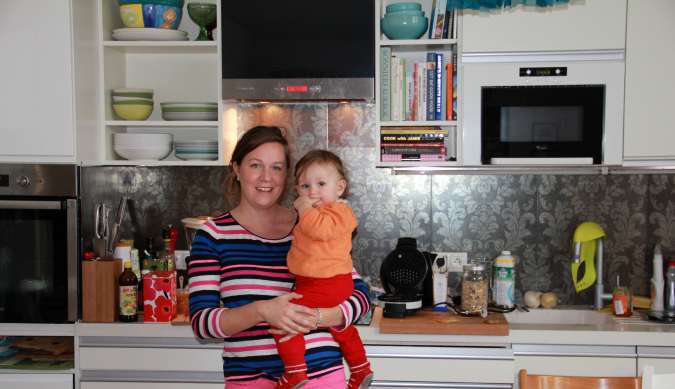
Cecilia and Mila at home in the kitchen
Despite the similarities she still occasionally longs for the flavors and aromas of home. “When my mom visits Prague she always brings a block of gjetost, a Norwegian goat cheese.” Cecilia offers me a slice of the sweet, creamy brown cheese—delicious. “We would eat that with stomp, a Swedish potato-based flat bread that’s similar to a tortilla,” she says.
Cecilia also misses the freshwater fish of her childhood. “My mother lived on a lake and the local fisherman would walk around the neighborhood selling their fresh catch,” she recalls. (Although some fishy festivities are best left in Sweden, she adds: “There is this annual festival in Sweden where people put salted herring in cans to ferment for months and then eat it on bread with chopped onion. It smells so awful you have to eat it outside.”)
She does occasionally manage to track down Swedish speciality items in the Czech capital. “Of course the IKEA grocery section usually carries my favorite cloudberry jam,” says Cecilia.
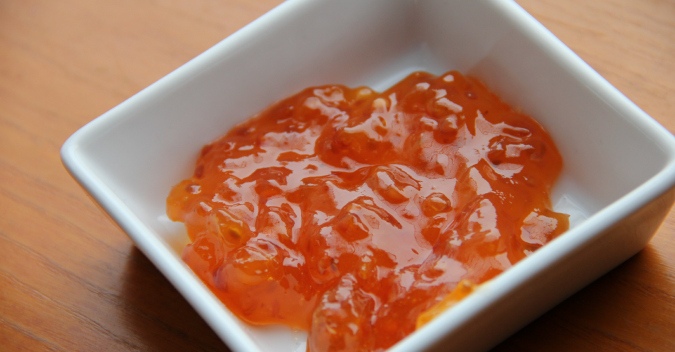
Swedish cloudberry jam
DM Drogerie is a must for picking up the dark sunflower-seed bread that’s reminiscent of Swedish loaves. Globus can be relied upon for the staple Scandinavian condiment Kalles Caviar, a tube of fish roe spread that’s tasty on eggs, crackers, or even Swedish waffles (våfflor) which is the dish Cecilia has chosen to make for us today.
“All Swedish celebrations—Christmas, Easter, whatever the holiday—have one thing in common,” Cecilia says, “And that’s smörgåsbord, a Swedish-style buffet. We like to serve an array of dishes including waffles and pancakes, meatballs, omelets, salmon, and, especially at Easter, lamb.”
Cecilia has selected waffles for their diversity and widespread appeal. “These are so easy to make and you can accommodate every preference with all the different toppings. Kids like them a lot, too.”
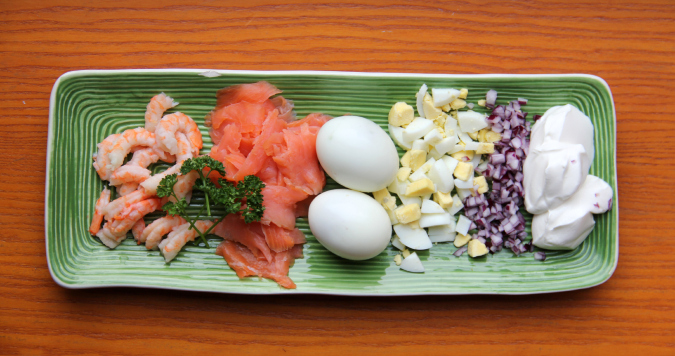
Colorful waffle toppings
Swedish Waffles
350g (2 + 1 scant cups) flour
3 tsp baking powder
pinch salt
100g (scant 1/2 cup) butter, softened
200ml (7/8 cup) milk
250ml water (you can replace the milk and water with 400 ml, or 1 2/3 cups milk)
2 eggs (optional, will make a fluffier waffle)
Toppings: Smoked salmon, cold, cooked shrimp, fresh parsley, diced red onion, chopped hard-boiled egg, crème fraiche, whipped cream, cloudberry jam, berries, powdered sugar
[ TIPS]: If you plan to use only savory waffle toppings, you may also toss a handful of chopped spinach into the batter for added color and flavor. For a sweeter waffle, you may add a little sugar to the batter, to taste. Toppings can be prepared in advance to save time.
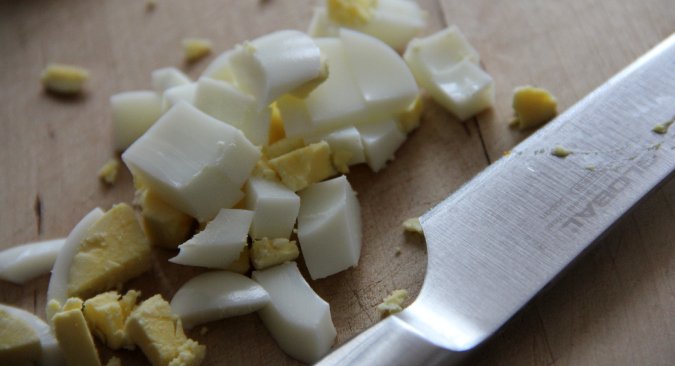
Prepare toppings in advance
Prepare your toppings and set aside.
Pre-heat your wafflemaker – if you haven’t got one you can prepare the waffles as you would crêpes by swirling the batter in a crêpe pan or small non-stick frying pan. You may want to add a little milk or water to thin the batter.
In a medium bowl, mix together dry ingredients.
Add in wet ingredients and mix gently just to combine.
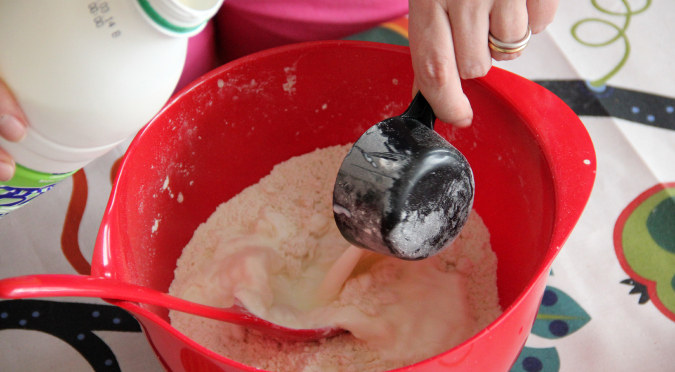
Combine wet and dry ingredients
Beat the mixture with an electric mixer, 2-3 minutes until completely smooth. You may also use a wooden spoon to beat the batter by hand, stirring until the batter is foamy and without any lumps.
For best results refrigerate the batter for at least 20-30 minutes.
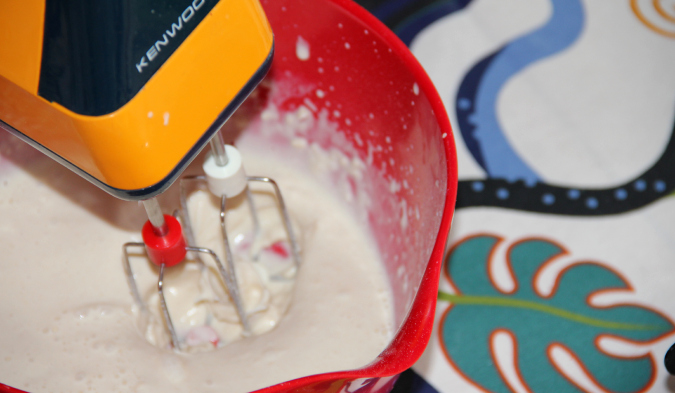
For best results, use an electric mixer
Using a soup ladle or a measuring cup, slowly pour about 1/2 cup of the batter onto the heated waffle iron.
Cook the waffle according to your wafflemaker’s settings.
(This recipe makes about 5-6 medium-sized waffles.)
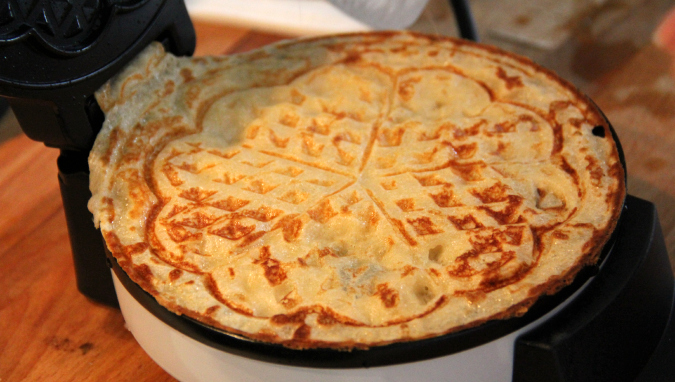
A golden-topped, finished waffle
Once the waffles are cooked through to a golden-crisp finish, slice them into triangular sections and top with the desired garnishes or leave them plain and let your guests top their own waffles.
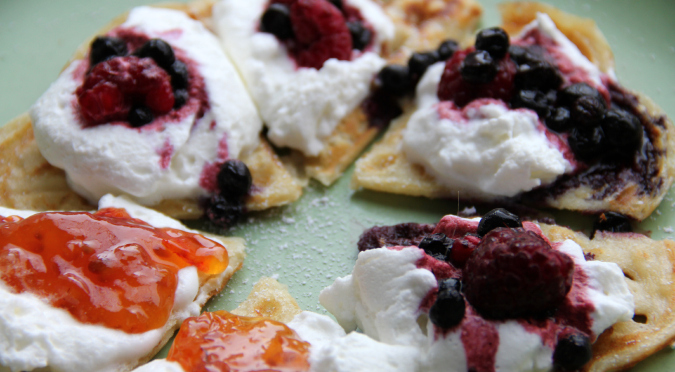
Waffles with whipped cream, fresh berries, cloudberry jam
Swedish waffles can certainly be enjoyed before and beyond the Easter season and make the perfect choice for brunch or a light meal any time you want to impress your family or friends (and spend little time and money doing it!).
In fact, the month of March is also a particularly good time to enjoy these hot and tasty griddle cakes: Cecilia tells us that March 25 is våffeldagen, or waffle day, in Sweden.
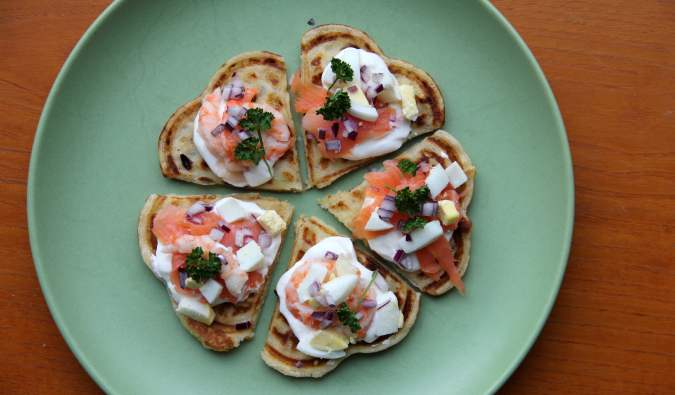
Savory seafood waffles
“You simply can’t go wrong with this dish,” she says. With whole hearts—and full stomachs—we certainly agree.
**
What are your country’s traditional Easter dishes?
Photos by Daniel Zahradníček.
Related articles












 Reading time: 4 minutes
Reading time: 4 minutes 